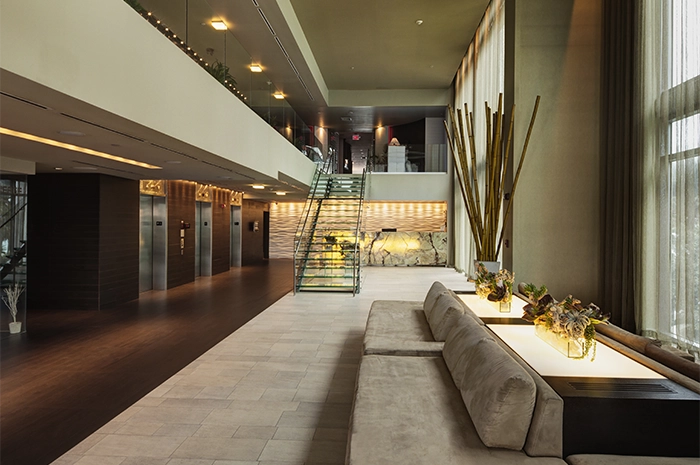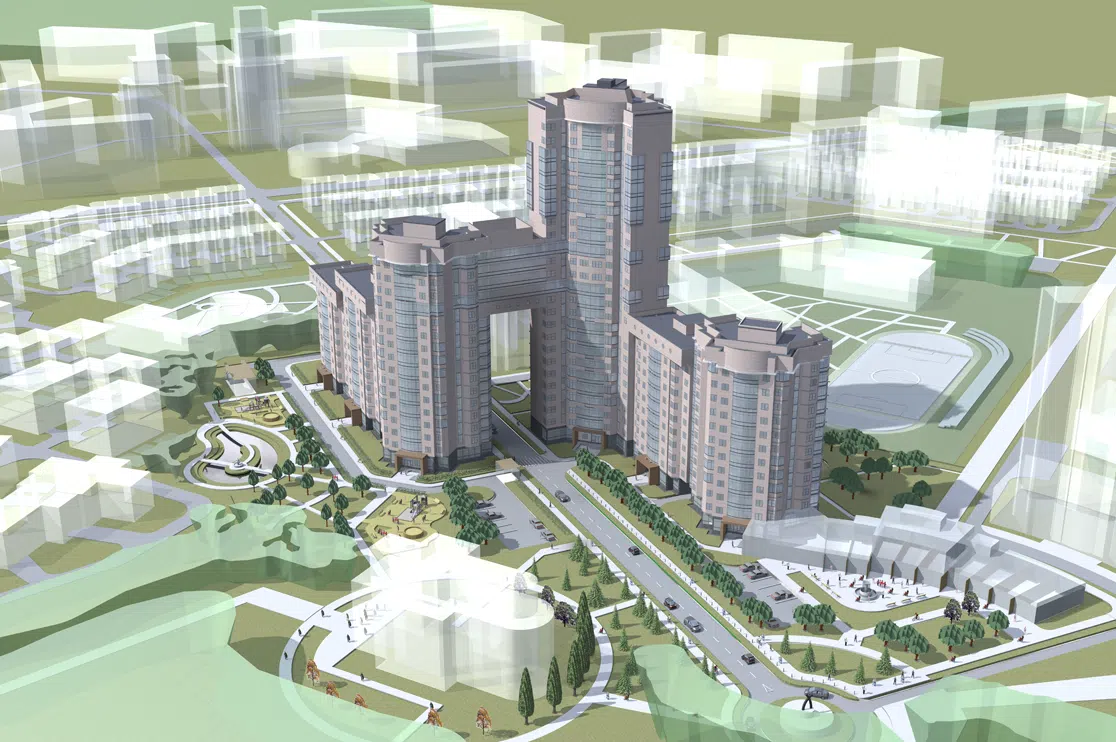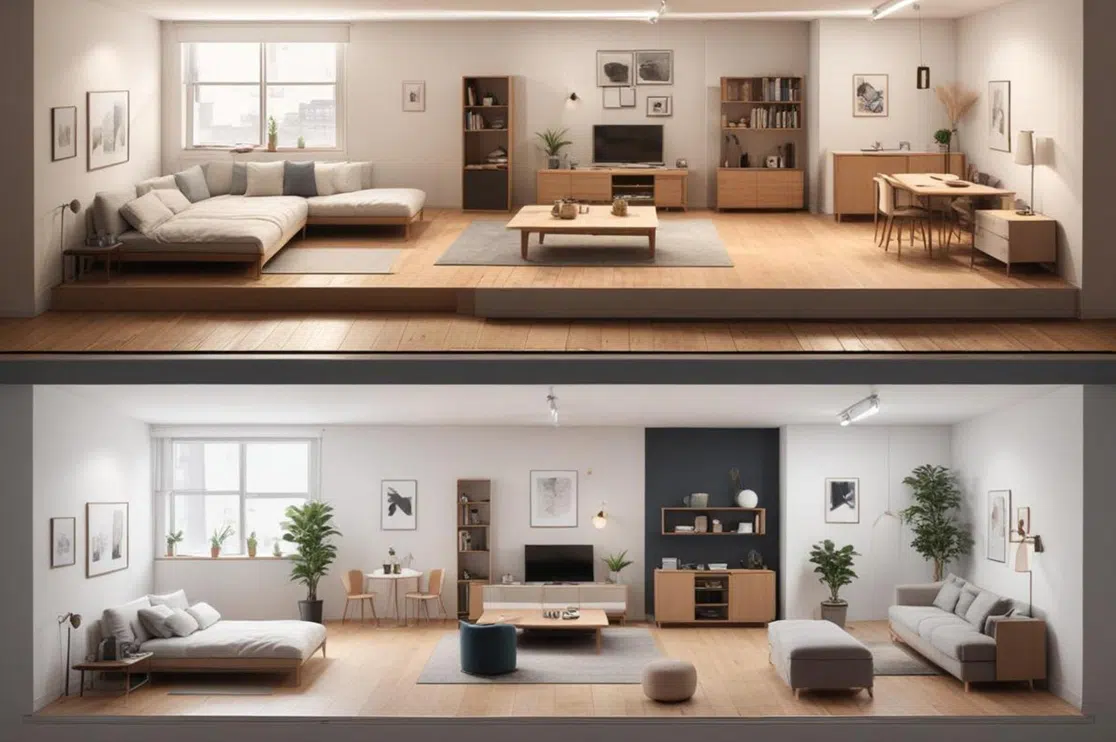Architectural rendering is an art form, and it can be difficult to balance aesthetic techniques with a clients’ needs and expectations, whether you’re a homebuilder, real estate developer, or interior designer.
We’ll guide you through different forms of rendering and how to utilize them to their fullest potential, so you know exactly what to tell your architectural rendering studio.
Table of Contents:
3D Rendering
3D modeling generates images based on 3D data that is stored in a computer program. Its primary purpose is to create a visual interface that offers a clearer understanding of a project to clients and developers. 3D visualization offers benefits such as real-time insights and improved processing.
It is largely used in AEC, the automotive industry, gaming, healthcare, manufacturing, and media and entertainment. The global 3D rendering software and visualization market size is expected to reach 7.96 billion USD by 2027.
Factors driving its growth include increased demand for real-time rendering and architectural planning for smart cities.
3D visualization is the go-to rendering technique in today’s architecture. However, this has resulted in some architectural rendering services (or their clients) choosing it without thought of how to play to its strengths. Let’s take a closer look at where 3D architectural rendering shines.
This form of rendering is by far the most precise method of presenting the exact measurements of a structure. Such an advantage is particularly useful for presentations in sales and marketing settings, as investors receive the most comprehensive view of the project, including different angles with detailed features.
Photorealistic 3D modeling also provides the benefit of visualizing alterations throughout a project, since the image can be transformed instantly and effortlessly as clients see fit.
In addition, there is always the option of working with architectural walkthroughs and fly-throughs, which add a whole new dimension to the viewer experience through the power of 3D animation.
Associations with 3D rendering:
- High technology and modernity thanks to advanced technology utilized
- Credibility as a result of precision and accuracy
When to use 3D rendering services:
- Visualizing innovative or extravagant structures to simulate the experience of seeing them in person
- Catering to marketing campaigns that may need to be expanded beyond a single image
- Visualizing projects undergoing experimentation in design
Black & White Rendering
This technique is no longer a common occurrence in modern rendering. Our question is: Why not?
Color is an excellent tool for conveying mood, but it shouldn’t be the only alternative you consider.
The most important benefit of opting for black & white instead of color in architectural rendering is that it avoids distractions from the overall concept.
In certain scenarios, colors in an image do not accentuate the strengths of a design, but rather direct the audience’s focus away from them.
B&W removes this interference, subtly placing emphasis on the composition and textural nuances of the structure.
Specifically, it brings attention to lines, shapes, lights and shadows, and perspective. From an artistic point of view, this is a particular advantage of images with a broad range of tonal values, as in blacks to whites and varying gray tones in between.
This allows the visual dimension of the rendering to shine through without overwhelming the viewer.
In addition, the color schemes that emerge from certain design or digital processing trends tend to subconsciously (or consciously) suggest specific eras. Though this may result in an intentional decision to use color, it can also be a reason to eliminate it.
Black & white renderings evoke a timeless, traditional aesthetic that may better suit the project at hand.
Associations with Black & White rendering:
- Minimalism due to lack of color variation
- Classic aesthetic thanks to lack of connection with certain time periods
- Strength, durability, and dependability as a result of emphasis on angular lines and geometric shapes
When to use back & white rendering:
- Visualizing architecturally detailed, intricate, and/or complex projects
- Visualizing structures meant to suggest agelessness (ex. Government buildings, factories, etc.)
Artistic Rendering
Artistic rendering is the most diverse method of visualizing architecture.
Though it can easily be adapted for different phases of a project, different mediums are certainly more suited to different applications.
For example, pencil and markers are effective for visualizing the early stages of a concept as they are a quick method of creating a diagram that conveys only essential elements. The roughness and looseness associated with these rendering techniques emphasize the layout and balance of an image.
An artistic rendering of the finalized architectural rendering can convey a creative, personalized feel, ideal for promotional purposes. One of BluEnt’s favorite choices is watercolor rendering.
Recommended Reading:
Watercolor Rendering
This has the opposite effect of black & white rendering. It stresses the mood a building might evoke when situated in the real world, as opposed to the technical details of the design.
It gives you not just complete control over the image’s setting, but a degree of artistic licence to achieve the desired mood. Instead of accentuating lines and shapes, it gives emphasis to harmony and fluidity.
The personalized touch of watercolor architectural visualization also creates a sense of uniqueness, augmenting the character of the structure’s design and the situation surrounding it.
Much of this effect stems from color palette and artistic style, but it also comes from the selection of decorative elements such as foliage, furnishings, and passersby.
These enable viewers to quickly form cultural connotations and inferences as to the building’s purpose. They can vary from dreamlike luxury to relaxed suburbia.
Associations with artistic and watercolour rendering:
- Organic quality stemming from traditionally hand-painted nature
- Whimsical and imaginative quality stemming from lack of photorealism
When to use artistic and watercolour rendering:
- Visualizing cultural buildings, public spaces, or any projects with heavy social implications
- Visualizing conversation pieces designed to provoke an explicit mood
Conclusion
The beauty of rendering is that it comes in all shapes and sizes: 2D and 3D, black & white and color, photorealistic and artistic. Luckily, you don’t have to look far for rendering services.
BluEntCAD is an architectural rendering company that provides renderings for exteriors, interiors, and products, including furniture. Whether you need a 3D walkthrough, an architectural visualization, or photorealistic 3D rendering, we’ve got you covered.
We combine techniques and theories that maximize the benefits of multiple methods. But don’t take our word for it. Check out our portfolio.
Ready to get the architectural renderings you deserve? Contact us now!
Maximum Value. Achieved.







 Architectural Rendering: Revolutionizing Urban Planning for Future Cities
Architectural Rendering: Revolutionizing Urban Planning for Future Cities  Real Estate Virtual Staging: Avoid These Mistakes to Sell Your Home Fast (With Pro Tips)
Real Estate Virtual Staging: Avoid These Mistakes to Sell Your Home Fast (With Pro Tips)  How Does 3D Rendering Help with Virtual Staging a House for Sale?
How Does 3D Rendering Help with Virtual Staging a House for Sale?  Best 3D Custom Wardrobe Designs for Your Bedroom
Best 3D Custom Wardrobe Designs for Your Bedroom